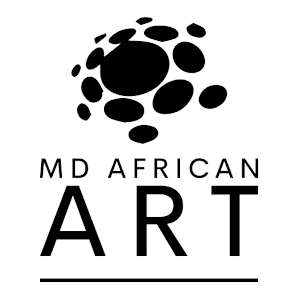As African Americans have greater access to wealth, a cultural renaissance is underway, marked by an ongoing fascination with African art. This flourishing interest reflects not only a quest for aesthetic appreciation but also a deep-seated desire to reconnect with ancestral roots and celebrate cultural heritage.
Historically, African art has held a profound significance within African American communities, serving as a tangible link to the continent's rich cultural legacy. During the era of slavery, African art provided a source of spiritual solace and cultural continuity amidst the brutality of bondage. From the rhythmic beats of the drum to the intricate designs of traditional textiles, these artistic expressions served as symbols of resilience and resistance, forging a sense of identity and belonging in the face of adversity.
As African Americans emerged from the shadows of slavery and segregation, their quest for equality and empowerment found expression in the arts. The Harlem Renaissance of the 1920s and 30s, for example, witnessed a flourishing of African American creativity, with artists like Aaron Douglas and Augusta Savage drawing inspiration from African art forms to challenge racial stereotypes and celebrate cultural pride.
In the decades that followed, African American artists, scholars, and activists continued to champion the importance of African art as a source of inspiration and empowerment. Figures such as Romare Bearden and Faith Ringgold incorporated African motifs and symbolism into their work, while cultural icons like Maya Angelou and James Baldwin celebrated the vibrancy and resilience of African heritage in their writings.
Today, as the African American middle class grows in size and influence, there is a renewed interest in African art as a means of cultural expression and connection. Affluent African American families, buoyed by economic prosperity and social mobility, are increasingly investing in art that reflects their heritage and values. From traditional sculptures and masks to contemporary paintings and mixed-media installations, African art offers a wealth of opportunities for self-expression and cultural exploration.
Moreover, the rise of digital platforms and social media has facilitated greater access to African art and culture, enabling African Americans to explore, collect, and share their passion with a global audience. Online marketplaces, virtual exhibitions, and educational resources provide a wealth of opportunities for art enthusiasts to deepen their understanding and appreciation of African artistic traditions.
Beyond the realm of personal enrichment, the growing interest in African art among the African American middle class has broader implications for cultural diplomacy and economic development. As collectors and patrons, affluent African Americans play a pivotal role in supporting African artists and promoting cross-cultural exchange. By investing in African art, they not only preserve and celebrate cultural heritage but also foster economic empowerment and sustainable development in African communities.
In conclusion, the burgeoning interest in African art among the African American middle class represents a convergence of cultural heritage and economic prosperity. As African Americans reclaim and celebrate their ancestral roots, they are not only enriching their own lives but also contributing to a broader cultural renaissance that transcends borders and generations. In the vibrant tapestry of African art, they find not only beauty and inspiration but also a profound sense of connection and belonging.

